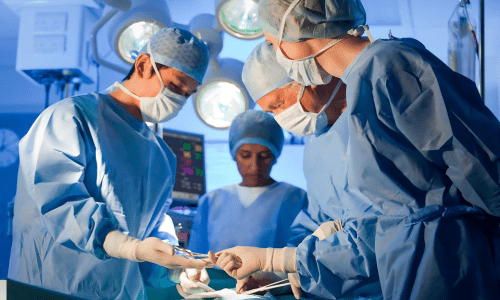Lap Myomectomy

Lap Myomectomy (Surgeries)
Lap Myomectomy, also known as Laparoscopic Myomectomy, is a minimally invasive surgical procedure used to remove uterine fibroids (leiomyomas) while preserving the uterus. Uterine fibroids are non-cancerous growths that often appear during childbearing years. This procedure is particularly beneficial for women who wish to retain their fertility and avoid the more invasive hysterectomy.
Understanding Uterine Fibroids
What are Uterine Fibroids?
Uterine fibroids are benign tumors that originate in the smooth muscle layer of the uterus. They can vary in size and number and are classified based on their location within the uterus.
Types of Uterine Fibroids
- Intramural fibroids: Located within the muscular wall of the uterus.
- Submucosal fibroids: Protrude into the uterine cavity.
- Subserosal fibroids: Project to the outside of the uterus.
- Pedunculated fibroids: Attached to the uterus by a thin stalk.
Symptoms and Diagnosis
- Symptoms include heavy menstrual bleeding, pelvic pain, frequent urination, and infertility.
- Diagnosis is typically made through pelvic exams, ultrasounds, and MRI scans.
Lap Myomectomy Procedure
Preoperative Preparations
- Medical history review and physical examination
- Imaging studies to map fibroid locations
- Preoperative instructions, including fasting and medication adjustments
Step-by-Step Procedure
- Anesthesia: General anesthesia is administered.
- Incisions: Small incisions are made in the abdomen.
- Laparoscope Insertion: A laparoscope (a thin, lighted tube with a camera) is inserted.
- Fibroid Removal: Surgical instruments are used to remove the fibroids.
- Closure: Incisions are closed with sutures or surgical glue.
Postoperative Care
- Monitoring in a recovery room
- Pain management
- Instructions for home care, including activity restrictions and wound care
Benefits of Lap Myomectomy
- Minimally Invasive: Smaller incisions reduce scarring and pain.
- Faster Recovery: Patients typically recover more quickly than with open surgery.
- Lower Risk of Complications: Reduced risk of infection and blood loss.
Risks and Considerations
Potential Risks and Complications
- Bleeding
- Infection
- Damage to surrounding organs
- Scar tissue formation
Factors Influencing Eligibility
- Size, number, and location of fibroids
- Overall health and medical history
- Desire for future pregnancies
Comparing Lap Myomectomy with Other Treatments
- Myomectomy vs. Hysterectomy: Preservation of the uterus vs. removal.
- Non-surgical alternatives: Medications and uterine artery embolization.
Recovery and Aftercare
Typical Recovery Timeline
- Initial recovery: 1-2 weeks
- Full recovery: 4-6 weeks
Tips for a Smooth Recovery
- Follow doctor’s instructions
- Avoid heavy lifting and strenuous activities
- Attend all follow-up appointments
Follow-up Appointments and Long-Term Care
- Regular check-ups to monitor for fibroid recurrence
- Discussing any concerns with a healthcare provider